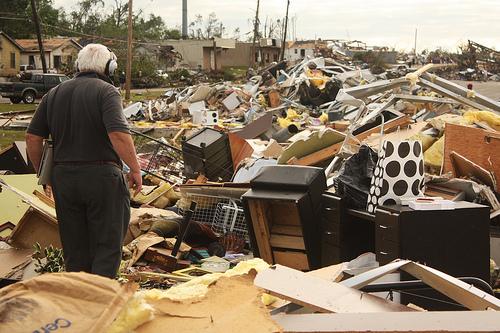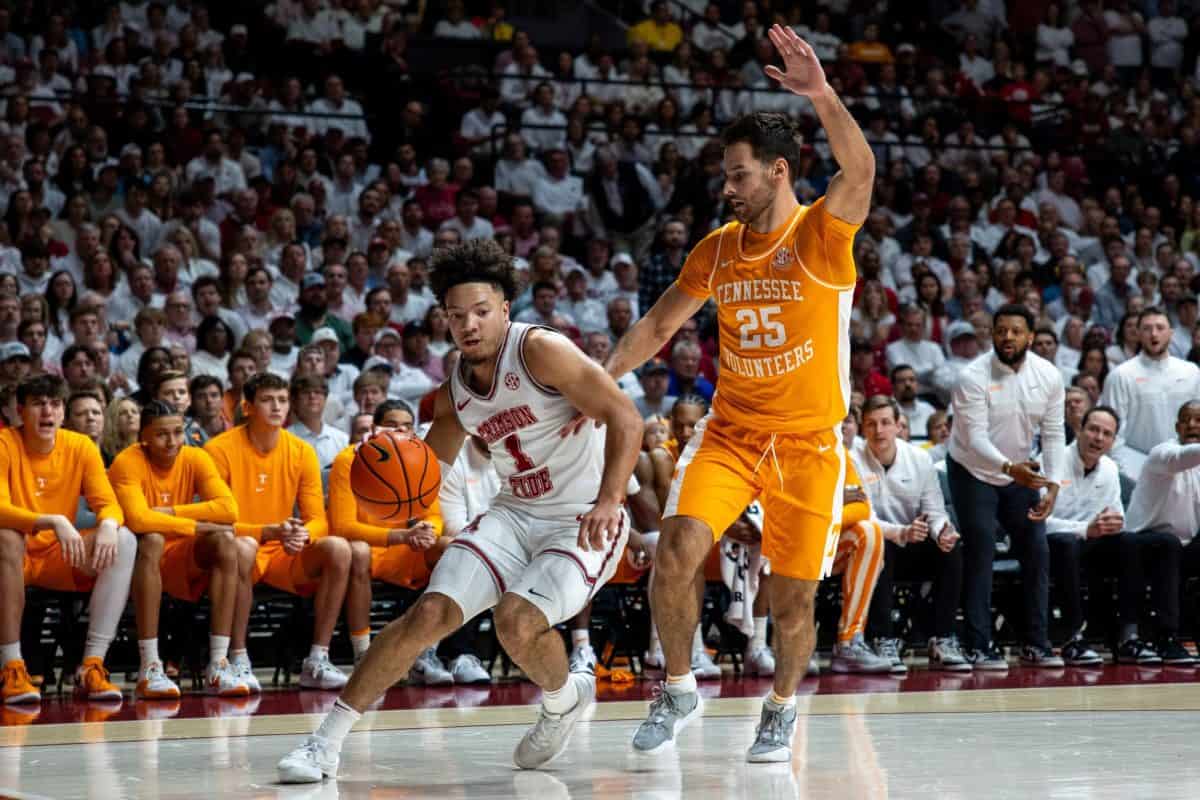Shortly after 5 p.m. Wednesday, April 27, the face of Tuscaloosa was dramatically changed. An EF-4 tornado, with winds upwards of 190 mph, cut a gash six miles long and half a mile wide through the middle of the city, stretching from the Rosedale housing project near I-359 through the neighborhoods of Alberta and Holt.
As of Tuesday morning, city officials confirmed that 40 people in the Tuscaloosa area were killed, though some officials expect that number to rise as more areas are searched. The storm system also hit Birmingham, Huntsville, Cullman and other communities in Alabama, as well as Georgia, North Carolina, Tennessee and Mississippi.
The tornado demolished homes and businesses from Rosedale through Forest Lake, 15th Street, Alberta and Holt before continuing for another 80 miles and hitting Birmingham.
As residents pick up the pieces, the city looks ahead to a recovery that will take months and years, not days.
“Beyond a nightmare”
UA senior James Fowler, former president of the Student Government Assosication was at the Delta Kappa Epsilon house on University Boulevard when the tornado hit. Fowler watched as the tornado formed on the other side of Bryant-Denny Stadium, and then saw the destruction afterward on 15th Street.
“You can see clear from the Wendy’s on 15th to Midtown Village,” he said Wednesday night. “There’s nothing there. The trees and the buildings are all gone.”
On 15th Street and McFarland Boulevard, the tornado leveled restaurants and businesses familiar to UA students. That night, word spread quickly that Milo’s Hamburgers, Full Moon Bar-B-Que and other locations were completely demolished. Students walked from their homes and apartments to see the area with their own eyes.
Thursday morning, the daylight revealed just how widespread the destruction was. Tuscaloosa Mayor Walt Maddox surveyed the damage from a helicopter.
“This is going to be a very long process,” he said Thursday. “The amount of damage done is beyond a nightmare.”
Maddox estimated Thursday that the damage would total in the tens of millions of dollars, but by Monday, as the destruction across the city became even more clear, the estimate for just debris removal became more than $100 million.
Across the city, though, the cost of the storm is not only measured in dollars. It’s measured in lives.
Six students from the University of Alabama, two students from Shelton State Community College and one student from Stillman College have been confirmed as being killed in the storm. As of Tuesday, the city confirmed that 40 people were killed. Even six days after the tornado hit, though, that number is not final.
Search and rescue teams from as far away as Louisiana have continued to comb the debris, and the area of destruction is so vast that it will take a long time before every impacted area is searched, officials said.
Teams with cadaver dogs began searching the Holt area Sunday, and many areas of the city and county remain unchecked by search and rescue teams.
“A lot of folks don’t realize how long this tornado was,” Tuscaloosa County Probate Judge W. Hardy McCollum said Tuesday. “We have about another 15 to 20 miles beyond Eagle Cove Marina that has yet to be searched.”
Although that area is sparsely populated, McCollum said debris from Tuscaloosa could have been carried into the area.
Maddox said that once the search and rescue phase has ended, likely on Saturday or Sunday, then debris removal and recovery can begin.
“This is not a sprint, it’s a marathon”
As soon as the storm hit, the people of Tuscaloosa began mobilizing to help those in need.
The University of Alabama opened up the Student Recreation Center to refugees, the city turned the Belk Activity Center into a shelter and many local churches and organizations mobilized to provide food and safety for those who were displaced by the storm.
Druid City Hospital Regional Medical Center treated more than 800 victims Wednesday night.
After the storm, volunteers began to line the streets of the affected areas, providing victims with food and water as they searched the debris of their homes.
In Alberta, the Federal Emergency Management Agency set up a command center at Leland Shopping Center on University Boulevard, where volunteers also coordinated their efforts to help residents. In Holt, FEMA set up at Holt Elementary School.
The Mid-Alabama region of the American Red Cross used its resources to coordinate more than 1,000 volunteers across the state, serving more than 49,000 meals on Tuesday alone.
“This is not a sprint,” said Chris Osborne, director of marketing and public relations for the Mid-Alabama region. “It’s a marathon.”
Osborne said the Red Cross is currently working to identify the needs of individual families. Although right now the primary concern of most victims is food and water, different needs will arise in the future, and the Red Cross is working to coordinate those for the families that need them.
“We work with all of our partners, like FEMA, to make sure we’re helping get people on the road to recovery,” Osborne said.
UA students have played a major role in providing aid to victims. Monday, the UA greek system provided more than 11,000 meals to victims and volunteers. The DKE house served as a major launching point for sending aid throughout the city.
Students have provided aid in any way possible, some even going to their homes throughout the country and returning with food and supplies.
“One of the remarkable stories that has come out of this event has been the generosity of our students,” Maddox said. “We see hundreds, if not thousands, of students out volunteering on a daily basis. Students are giving back to Tuscaloosa in an unprecedented way and I guess it’s easy to understand why. This is your city and you become attached to it.”
“A new day will dawn”
Maddox and other local officials know the city is hurting, but they also believe it can rise up from the destruction and be rebuilt.
“Recovery is going in to places that have already been removed from the map and beginning a new day,” Maddox said.
In Holt, the destruction of Brown Greenhouses did not mean the end of the business.
“Our customers told us not to quit,” said Margaret Brown, the owner of Brown Greenhouses.
Judge McCollum is optimistic about the area’s recovery.
“We will come back from this,” he said Thursday, “and we will come back even stronger.”
A year from now, Maddox said he believes Tuscaloosa will still be reeling from the desolation, but that the storm will not break the spirit of the city.
“A year from now, we will begin to see neighborhoods come to life,” he said. “What I hope to see is that this spirit of unity, this spirit of compassion and resiliency will carry us through and make a new life here in Tuscaloosa.
“We’re still here, we’re still fighting and we refuse to be defined by what happened on that terrible night. We decide for ourselves that what people will really remember us by is the fact that we got back on our feet. We refuse to quit, and we’re going to make this city a shining city on a hill.”









